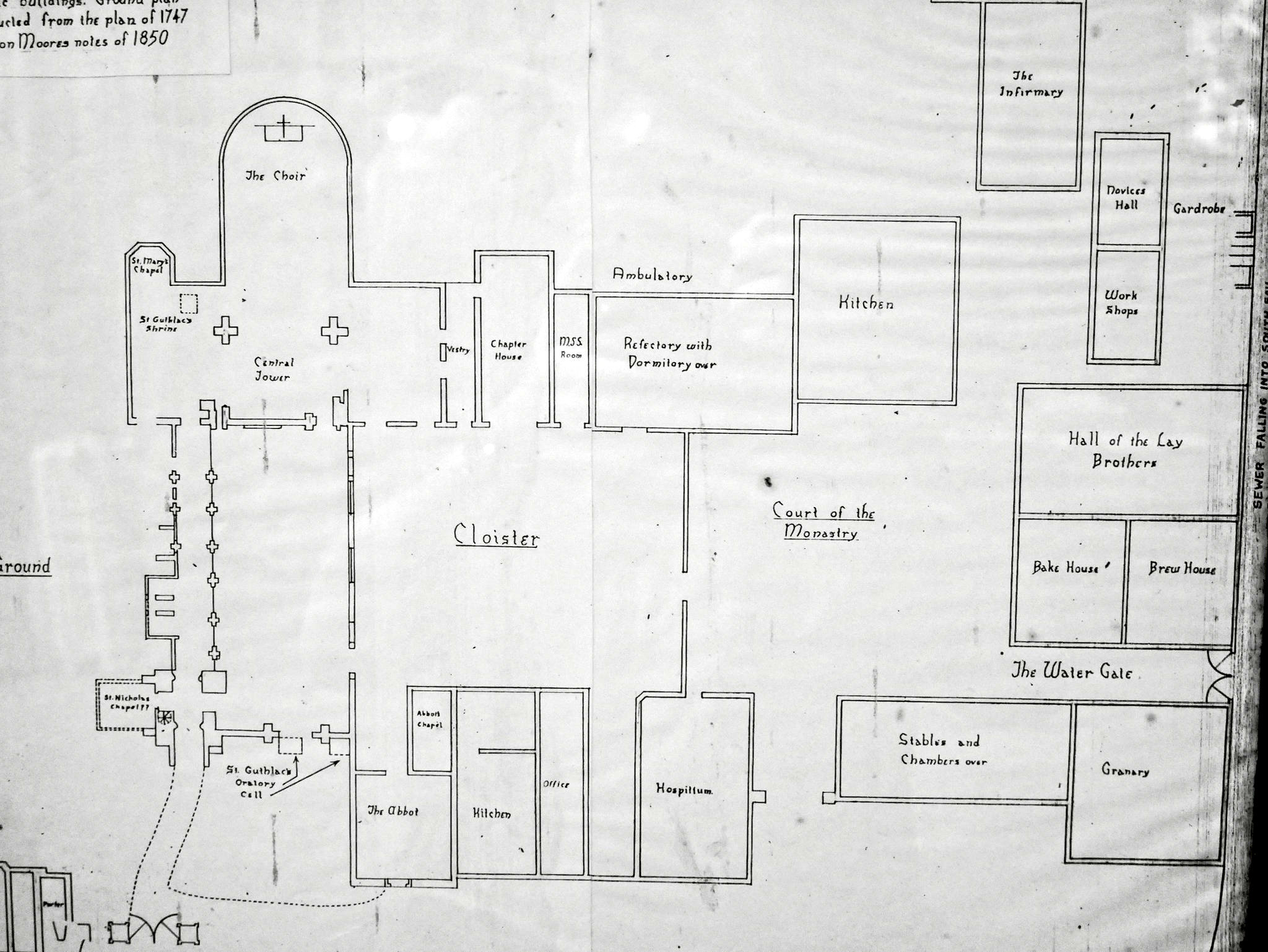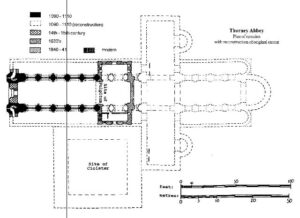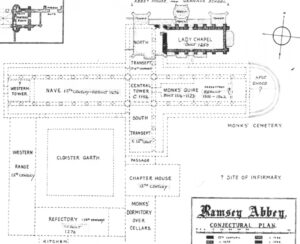Ramsey Abbey Conjectural Plan
Unfortunately the size and shape of the Abbey church is unknown to us at this time, perhaps we will never know ! What little Geophysics surveys that have taken place in the past haven’t given any solid conclusions where the Abbey might have stood ! It is very hard to believe that all the stone was robbed out of the ground and taken away, so somewhere there has to be some evidence of buildings.
My idea is to look at the size and shapes of the two closest Abbeys of the same period, Thorney and Crowland. Perhaps even Peterborough and Ely before they became full blown Cathedrals, and try and get some sizing. I’m working on the assumption that Ramsey being a very rich Abbey will be as big if not bigger than the ones already mentioned.
 1. Crowland
1. Crowland
The abbey church comprised a nave of nine bays with aisles, 183 feet long by 87 wide, an apsidal choir of five bays 90 feet long (overall length 273ft), a central tower and detached bell-tower at the east end. The existing remains consist of the north aisle, still used (as it was from the earliest times) as the parish church; the splendid west front, the lower (twelfth century) and the upper part (fourteenth century) elaborately decorated with arcading and statues, it is thought in imitation of Wells cathedral; and a few piers and arches of the nave. Much careful restoration and repair has been carried out since 1860, under Sir Gilbert Scott, Mr. J.L. Pearson, and other eminent architects.
 2. Thorney Abbey Plan
2. Thorney Abbey Plan
The plan shows that the Abbey church comprised a nave of eight bays to the main Tower, 116 feet long by 58 feet wide, the Tower base 41 feet square and from the Tower to the apsidal choir of four bays 74 feet long. The overall length of the Abbey was 230ft long by 140ft wide at the transepts.
 3. Ramsey Abbey Conjectural Plan
3. Ramsey Abbey Conjectural Plan
In 1967 a plan was published by Philip Dickinson which used the surviving documented information regarding the construction dates of various buildings at Ramsey, to produce a ‘model’ of what the layout may have looked like, you can see he has used a square ended model, not an apsidal end.
This I’m not sure about, if Crowland and Thorney were Apsidal then I think there is every possibility that Ramsey would have followed the trend, being very close in proximity to the other two Abbeys. In addition he and earlier scholars had concluded that one of the few surviving pieces of medieval buildings from the monastery may well be the remains of a Lady Chapel that therefore should have been located on the north side of the church’s east end. From this he then constructed a general model for the location of the church and cloister shown here.
The conclusion that the medieval building remains in the basement of the Abbey School, is the Lady Chapel, is not thought to be altogether correct at this moment in time, further investigation is needed.


